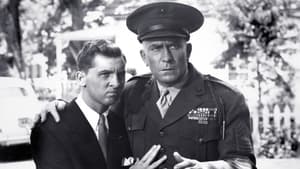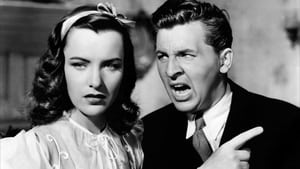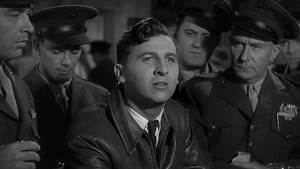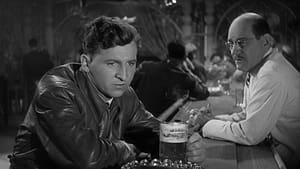Video Sources 0 Views
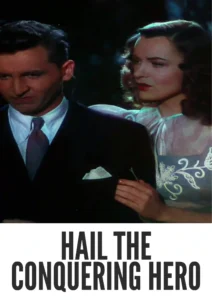
Synopsis

Step back into the tumultuous and comedic landscape of wartime America with Preston Sturges’ Hail the Conquering Hero, a brilliant satirical comedy from 1944, now beautifully colorized for a viewing experience that pops like never before. This film, written and directed by the master of wit Preston Sturges, delivers a hilarious blend of satire, farce, and social commentary centered around the accidental heroism of a Marine reject. Perfect for fans of classic comedies, those intrigued by wartime narratives, and anyone seeking sharp, intelligent humor, this HD download brings a timeless piece of cinematic brilliance to your screen. This film is also known as Hail the Conquering Hero: A Patriotic Comedy.
Hail the Conquering Hero tells the story of Woodrow Lafayette Pershing Truesmith (Eddie Bracken), a Marine discharged due to chronic hay fever. Ashamed to return home a failure, he confides in a group of Marines who decide to help him out. They concoct a plan to present him as a war hero to his hometown, much to Woodrow’s initial reluctance.Upon their arrival, Woodrow is greeted with a hero’s welcome. The town erupts in celebration, showering him with praise and attention. However, Woodrow’s conscience begins to trouble him as he grapples with the deception. The situation spirals out of control as he is paraded through town, kissed by seemingly everyone, and even nominated for mayor. Amidst the chaos, Woodrow falls for Libby (Ella Raines), the girl next door, further complicating matters. The film cleverly satirizes the nature of heroism, political ambition, and the public’s eagerness to embrace a good story, regardless of its authenticity. Ultimately, Woodrow must decide whether to continue the charade or reveal the truth, risking the disappointment of his town and the loss of Libby’s affection. Hail the Conquering Hero is a sharp and timeless comedy that resonates even today.
The film boasts an exceptional ensemble cast, each actor perfectly embodying their roles in this uproarious satire:
- Eddie Bracken as Woodrow Lafayette Pershing Truesmith
- Ella Raines as Libby
- William Demarest as Sergeant Heppelfinger
- Raymond Walburn as Mayor Everett Noble
- Franklin Pangborn as Town Councilman
Hail the Conquering Hero falls squarely into the genre of satirical comedy, blending elements of farce and social commentary to create a truly unique and memorable cinematic experience. Its witty dialogue, absurd situations, and sharp observations about human nature make it a standout film in the history of comedy.
Released in 1944, during the height of World War II, Hail the Conquering Hero dared to satirize the very idea of heroism and the fervent patriotism that gripped the nation. Preston Sturges, known for his fast-paced dialogue, quirky characters, and subversive humor, used the film to explore themes of identity, integrity, and the absurdity of public perception. Despite its potentially controversial subject matter, the film was a critical and commercial success, cementing Sturges’ reputation as one of the greatest comedy directors of all time. It remains a testament to the power of satire to challenge conventional wisdom and provoke thought, even in times of national crisis.
This colorized version of Hail the Conquering Hero has been meticulously restored, employing state-of-the-art digital techniques to breathe new life into the film’s visuals. The colorization process involved a detailed analysis of the original black and white footage, with careful consideration given to historical accuracy and aesthetic appeal. The team used sophisticated algorithms and artistic expertise to select appropriate colors for each scene, enhancing the film’s visual impact while preserving its original charm. The result is a stunningly vibrant and engaging viewing experience that allows modern audiences to appreciate Sturges’ comedic genius in a whole new way. While debates about colorizing classic films continue, this restoration aims to introduce Hail the Conquering Hero to a broader audience, ensuring its enduring legacy for generations to come.
- : Preston Sturges
- : Preston Sturges
- : Preston Sturges
- : John F. Seitz
- : Stuart Gilmore
- : Paramount Pictures
- : Paramount Pictures
- : 101 minutes
- : MP4
- : HD (1080p)
- : Compatible with most devices, including smartphones, tablets, computers, and smart TVs.
Hail the Conquering Hero is widely regarded as one of Preston Sturges’ finest films, praised for its sharp wit, brilliant performances, and insightful social commentary. Its enduring appeal lies in its ability to make audiences laugh while also prompting them to question the nature of heroism and the power of public perception. A timeless masterpiece of satirical comedy, Hail the Conquering Hero continues to resonate with viewers today.
- : What is Hail the Conquering Hero about?
- A: Hail the Conquering Hero is a satirical comedy about a Marine reject who is mistakenly hailed as a war hero upon returning to his hometown.
- : Is Hail the Conquering Hero (1944) considered one of Preston Sturges’ best films?
- A: Yes, it is widely regarded as one of his finest works, known for its sharp wit and social commentary.
- : Is this version of Hail the Conquering Hero colorized?
- A: Yes, this version has been professionally colorized to enhance the viewing experience.
- : What makes Hail the Conquering Hero interesting for classic film fans?
- A: Hail the Conquering Hero offers a unique blend of satire, farce, and social commentary, showcasing Preston Sturges’ comedic genius.
- : What is the download format?
- A: The download format is MP4, which is compatible with most devices.
- : What resolution is the download?
- A: The resolution is HD (1080p), providing a high-quality viewing experience.
Watch Hail the Conquering Hero Today!
